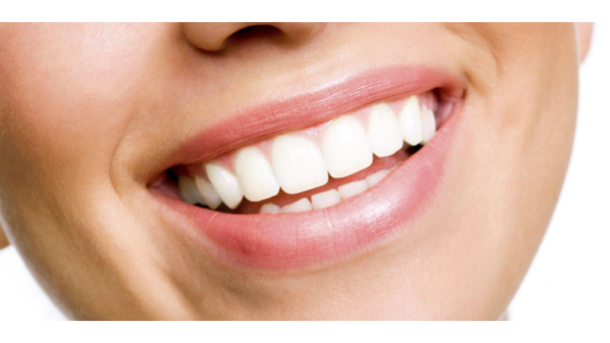Have you ever noticed bony growths on the floor of your mouth, just beneath your tongue? If so, you may be experiencing mandibular tori. While these growths are not harmful, they can be quite bothersome and disruptive to your daily life.
Whether you were born with them or developed them later on, understanding mandibular tori and how to manage them is crucial for your comfort and well-being.
In this article, we will delve into the world of mandibular tori, exploring their nature, symptoms, and the most effective strategies for dealing with them. Let’s unravel the mystery surrounding mandibular tori and find the best path to your oral health and peace of mind.
What Are Mandibular Tori?
Mandibular tori, or torus mandibularis, are harmless bony growths that appear on the inner side of the lower jaw, below the tongue. These growths, which can vary in size and shape, are usually smooth and painless.
Get Dr. B’s Dental Health Tips
Free weekly dental health advice in your inbox, plus 10 Insider Secrets to Dental Care as a free download when you sign up

How Do I Know If I Have Mandibular Tori?
Most individuals with mandibular tori do not experience any symptoms. However, you may have mandibular tori if you notice a bony lump or growth on the inside of your lower jaw. Other signs may include difficulty wearing dentures or an ill-fitting mouthguard, as well as occasional ulceration due to accidental biting or irritation. If you suspect mandibular tori, it’s best to consult your dentist for a proper diagnosis.
When to Consult Your Dentist
Taking action when you spot unfamiliar growths or abnormalities in your mouth is crucial. Symptoms like pain or challenges with dental appliances may warrant an appointment with your dentist.
If you have a history of tori, seek professional advice if you notice changes in the bony growth’s shape, size, or color, or if new growths emerge.
A combination of physical examination and dental X-rays aids dentists in diagnosing mandibular tori and differentiating them from other conditions. Should you experience discomfort, your dentist may refer you to an oral surgeon for suitable treatment options.
Tori Removal: Procedure, Recovery, and Potential Risks
While tori removal is often unnecessary, it can be beneficial in managing symptoms and enhancing functioning in some cases. Here’s what you can expect from the process, from the procedure to recovery and potential complications.
The Procedure: An Overview of What to Expect
Tori removal is usually an outpatient surgery performed under local anesthesia to numb the treatment area. In some cases, sedation or general anesthesia may be administered for added relaxation or unconsciousness during the procedure. General anesthesia may require an overnight stay at the hospital for observation.
During the surgery, an oral surgeon creates an incision in the gum tissue to reveal the tori, followed by careful removal using a surgical saw or another tool. If necessary, the surgeon may remove part of the jawbone and utilize a bone graft to rebuild the affected area. The incision is then closed with stitches.
Post-Operative Care and Recovery
Expect some swelling, bruising, and discomfort around your lower jaw following surgery. Your surgeon will offer instructions on pain management and oral care during the healing process. Rest and consume soft foods in the initial days post-procedure – a full recovery takes several weeks.
Understanding the Risks
As with any procedure, tori removal presents potential complications, such as:
- Infection
- Bleeding
- Damage to teeth, nerves, or other oral structures
- Numbness in the lip or chin
- Jaw stiffness or limited movement
- Scarring
- Anesthesia complications
Your oral surgeon will discuss these risks and complications with you before the surgery, providing an opportunity for you to ask questions and express concerns. This information helps you decide whether the procedure aligns with your needs.
Minimizing Complication Risks
To reduce the likelihood of complications, adhere to your surgeon’s pre- and post-operative instructions. Take prescribed medications as directed and abstain from smoking, which can hinder the healing process. By following these measures, you can enhance your recovery and enjoy the renewed comfort and functionality that tori removal can provide.
What Causes Mandibular Tori?
The exact cause of mandibular tori is still unknown, but several factors contribute to their development. These factors include:
- Genetic predisposition: Mandibular tori tend to run in families, indicating a genetic link. Studies conducted on twins have shown a strong correlation between the presence of tori in identical twins.
- Gender: There is some debate regarding the influence of gender on mandibular tori. While some sources suggest they are more common in men, others report the opposite.
- Trauma: Physical trauma to the jaw may contribute to the development of mandibular tori, although the exact relationship is not fully understood.
- Teeth grinding (bruxism): Chronic teeth grinding or clenching can exert stress on the jawbone, potentially leading to the formation of tori.
- Vitamin deficiencies: Inadequate intake of certain vitamins, particularly those involved in bone health, may play a role in the development of mandibular tori.
- Calcium-rich diet: Some studies suggest that a diet low in calcium or high in calcium-rich foods may be associated with an increased risk of mandibular tori.
- Fish consumption: Consumption of fish, particularly raw or undercooked fish, has been suggested as a possible contributing factor.
- Chewing on dry, raw, or frozen meat: Habitual chewing on hard substances like dry, raw, or frozen meat may potentially contribute to the formation of mandibular tori.
It is important to note that further research is needed to fully understand the causes and mechanisms behind mandibular tori.
Prevention, Prognosis, and Management
Unfortunately, it’s not possible to prevent the occurrence of mandibular tori. However, once diagnosed, the condition generally requires no treatment unless it interferes with denture use or oral hygiene practices. If necessary, your dentist may recommend minor surgical procedures to remove or reshape the tori. In most cases, though, mandibular tori can be safely managed through regular dental check-ups and maintaining good oral hygiene.
Frequently Asked Questions:
Q: What causes mandibular tori?
A: The exact cause of mandibular tori is unknown, but factors such as genetics, teeth grinding, and certain lifestyle choices may contribute.
Q: Is mandibular tori a serious condition?
A: Mandibular tori are typically benign and pose no serious health risks. However, if you experience any concerns or discomfort, it’s best to consult your dentist.
Q: How can I get rid of mandibular tori?
A: In most cases, mandibular tori do not require treatment. If necessary, your dentist may suggest minor surgical procedures to remove or reshape the tori.
Q: How do I know if I have mandibular tori?
A: Look for bony lumps or growths on the inside of your lower jaw, along with difficulties wearing dentures or occasional ulceration due to accidental biting or irritation. If you suspect mandibular tori, consult your dentist for a proper diagnosis.
Mandibular tori, though often harmless, can be concerning if you’re unfamiliar with them. Remember, these bony growths are usually painless and do not require treatment unless they interfere with denture use or oral hygiene practices. Regular dental check-ups and good oral hygiene can help you effectively manage mandibular tori. If you have any questions or concerns, don’t hesitate to reach out to your dentist as this website is for educational purposes only.
Mark Burhenne DDS







